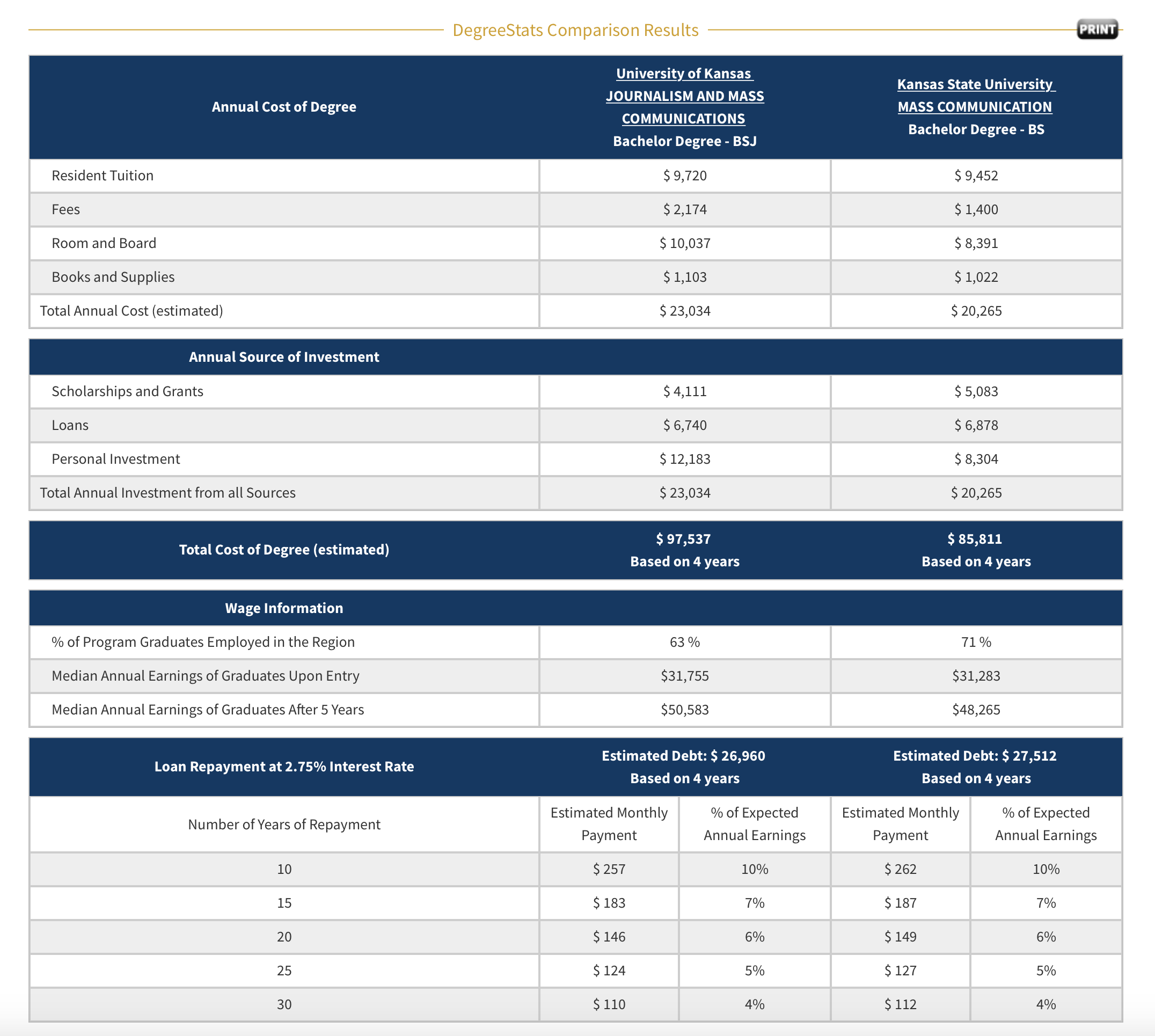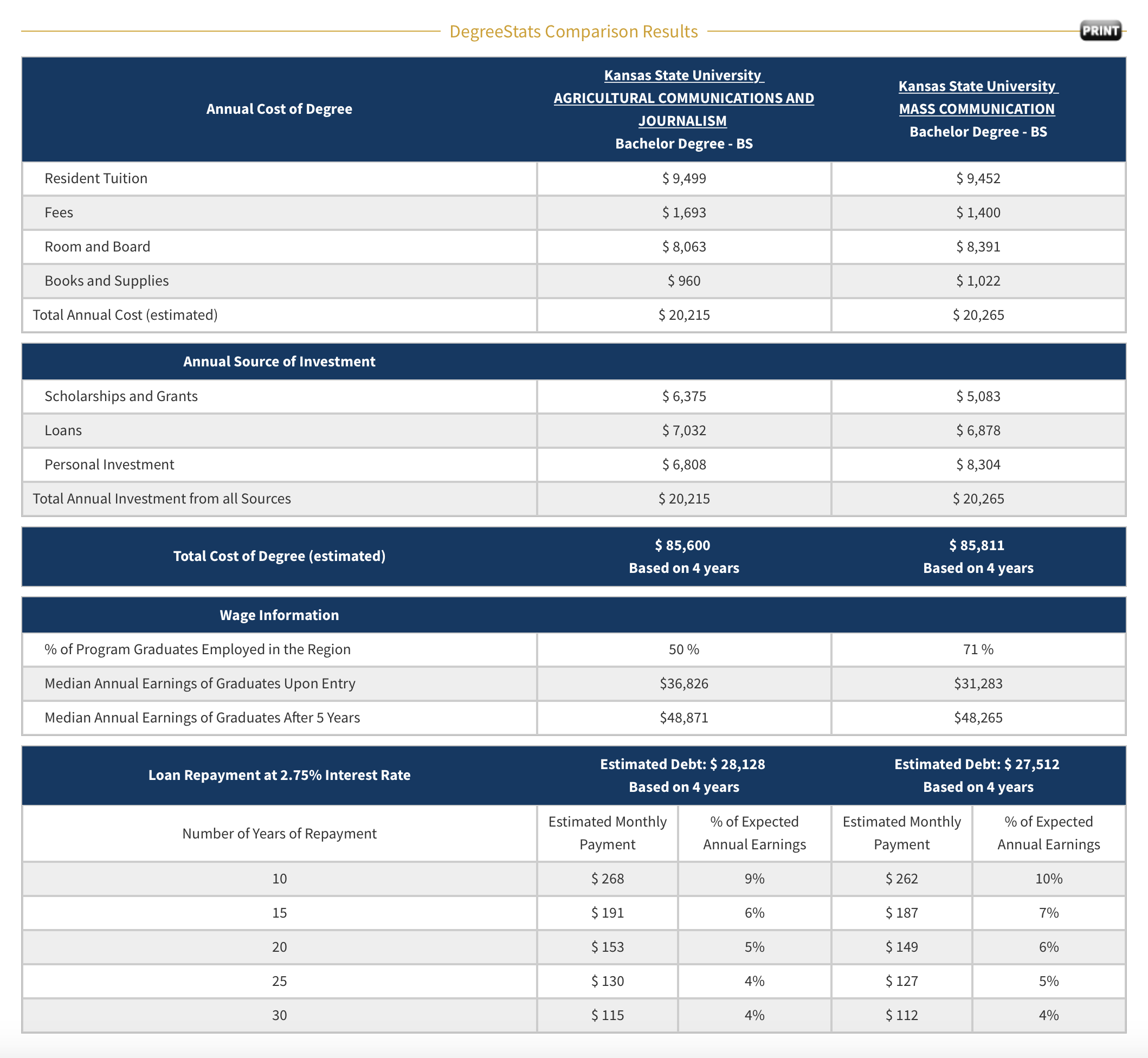Kansas DegreeStats: A Planning Tool for Future Success

Parents of Kansas kids: Are you and your child making plans for what follows high school graduation? It’ll be here before you know it, whether they’re six years old or 16!
At HirePaths, we talk a lot about the many post-secondary options that can result in successful and lucrative careers, but when you want to explore specific education options at specific Kansas institutions and learn what specific salaries are to be expected from specific careers — that is, when you want the details — where do you go? We suggest the Kansas DegreeStats website.
Created by the Kansas Board of Regents, Kansas DegreeStats is an interactive online tool that reviews cost and earnings data from real graduates for each undergraduate degree program offered at a public university or college in Kansas. With hundreds of degree programs offered by state schools, this tool seeks to make the decision process a little less overwhelming.
Does your child know what topic they want to study but aren’t sure what type of degrees are offered and where? Are they interested in a particular school and want to know what their options are there? You can search by institution, major, degree type or number of credit hours required.
Putting the DegreeStats Tool to Use
As my son’s first career counselor, I decided to show him a broad range of options to keep him open-minded about the possibilities. I entered “construction science” into the search bar and clicked submit.
I could see right off the bat that there are plenty of post-secondary construction education options at our Kansas schools, for associate and bachelor’s degrees alike. The tool allows you to compare up to three, so I chose two associate degree programs and one bachelor’s degree. The comparison chart gave us a side-by-side view of the following for each:
- Annual cost of degree
- Four-year total cost of the degree
- Percentage of program graduates employed in the region
- Median annual earnings of graduates upon entry
- Median annual earnings of graduates after five years
- Estimated debt and sample payment schedules



Give It a Try!
As you can see, this tool can play a big part in streamlining the post-secondary decision-making process. What kind of career is your kid curious about? We invite you to visit the Kansas DegreeStats site and see what education-related factors may apply. It pays to plan ahead!
Alison Rogers is a content marketer at New Boston Creative Group LLC, as well as the parent of a son who’s beginning to think seriously about what he wants to be when he grows up. She has a bachelor’s degree in agricultural communications and journalism from Kansas State University, and yes — she bleeds purple.



